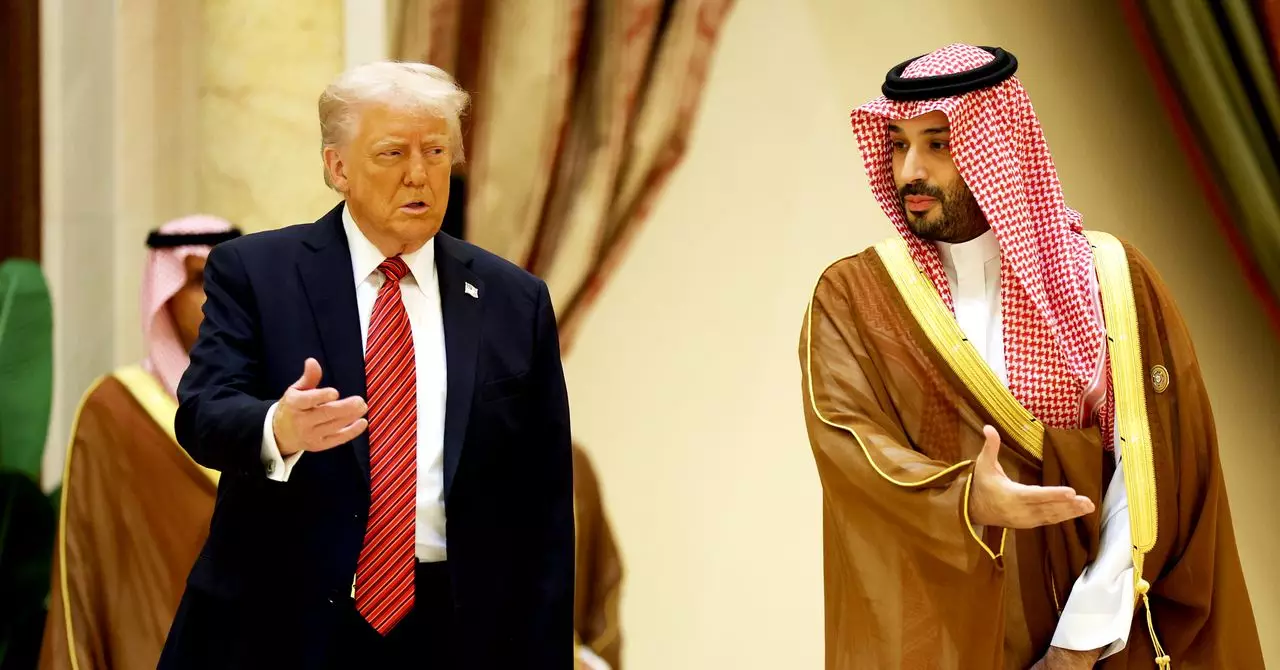In an audacious move that underscores the shifting dynamics of global technology leadership, former President Donald Trump’s recent Middle East tour has drawn attention to the ambitious AI strategies being forged between the United States and its Gulf partners. Accompanying Trump were an array of tech magnates and entrepreneurs, all converging on an innovative front that hints at the growing entanglement of technology with geopolitics. The developments that emerged during this trip signal not just a partnership but a transformation of the global AI landscape, positioning the Middle East as a pivotal player in this arena.
Fostering Strategic Partnerships
At the center of this initiative is a landmark agreement involving American tech firms and the Emirati company G42, promoted as the venture that will establish the largest AI datacenter cluster beyond U.S. borders in the United Arab Emirates. The scale of this project, which promises a staggering five gigawatts of AI computing capacity, represents a significant leap toward positioning the UAE as a preeminent hub for AI research and advancements. Sheikh Tahnoon bin Zayed Al Nahyan’s statements about the transformative potential of AI technology illuminate not just the ambitious fiscal undertakings involved—estimated at $1.5 trillion—but also the UAE’s broader vision to enhance its global standing in high-tech development.
This sentiment was echoed during Trump’s addresses, where he championed the notion of forging extensive, dollar-denominated partnerships that ultimately seek to yield substantial economic returns, primarily in tech and defense sectors. The message couldn’t be clearer: The U.S. intends to solidify its technological foothold while simultaneously assisting its allies in becoming formidable competitors in the AI domain. According to Paul Triolo of DGA-Albright Stonebridge Group, these alliances are pivotal for bringing the most advanced GPU technologies to the region, thus addressing a critical demand for high-tech capabilities.
The AI Arms Race: A Geopolitical Perspective
A salient aspect of this collaboration is the undeniable proximity both Saudi Arabia and the UAE hold to key technologies and investments, particularly in AI infrastructures. The announcement of the newly minted AI investment firm, Humain, under the umbrella of Saudi Arabia’s Public Investment Fund, has unleashed a wave of strategic partnerships—the likes of which with tech giants Nvidia, AMD, and Amazon Web Services (AWS). These partnerships illuminate a concerted effort to create a diverse and technologically empowered environment in the region, as exemplified by Saudi Arabia’s aspiration to secure 500 megawatts of AI capability through their deal with Nvidia.
This technology race, however, is not devoid of complexity. With both Saudi Arabia and the UAE actively nurturing partnerships with China for technology imports, they find themselves straddling a delicate balance in a landscape marked by geopolitical rivalries and resource-driven motivations. The reality is that these Middle Eastern nations possess vast financial reserves bolstered by oil revenues, alongside a clear vision to transition towards technologically advanced economies. The drive for tech-led development isn’t merely aspirational; it is integral to their economic survival and international standing.
Regulatory Shifts and the Road Ahead
Furthermore, recent regulatory changes initiated by the U.S. government offer a revealing insight into the strategic calculus at play. By reversing a regulatory framework that would have limited the export of advanced chips to specific nations—including the U.S. allies in the Middle East—Trump’s administration seemingly emboldened American companies to deepen their ties in the region. Critics of the previous restrictions argued they posed risks of pushing those nations towards alternative technologies, particularly from China, which would only deepen the global rift over tech supremacy.
This redefined policy landscape, characterized by an eagerness to enhance American competitiveness, reaffirms the imperative of innovation at home. The shifting stance also reflects a broader understanding that, to lead in AI and combat encroaching rivalries, collaboration with allies is indispensable. This evolution in policy could arguably serve to fortify American positioning in the global technology arena, rendering it vital for future competitiveness to evolve beyond mere bilateral relationships into multi-layered alliances.
The unfolding narrative of AI partnerships between the U.S. and the Arabian Gulf presents a remarkable convergence of enterprise, ambition, and geopolitical strategy. As these nations invest not only in technology but also in their commercial futures, they are reshaping the contours of global technological power—an endeavor that promises transformative benefits for all involved. The stakes are high, and the developments in the weeks and months to come will significantly influence not only the economies of the Gulf states but also the world’s technological landscape at large.

